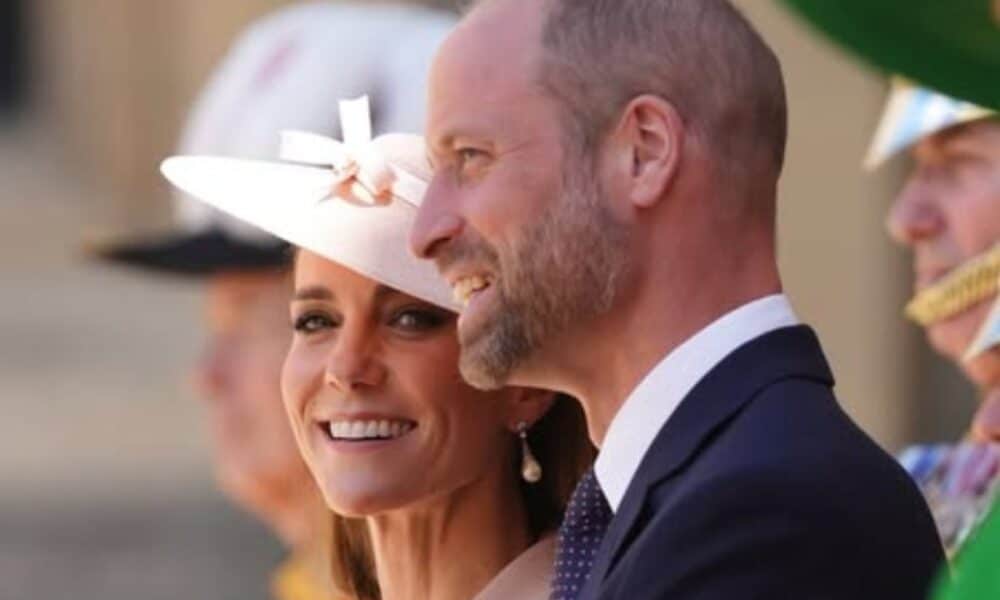Share
Tweet
Share
Share
In a moment of historical transition, Prince William, heir to the British throne, intensifies his role as the central figure of the monarchy, while King Charles III, diagnosed with cancer in 2024, faces limitations imposed by treatment. At 76 years old, the monarch, who ascended the throne in 2022 after Elizabeth II’s death, reduced public commitments, delegating crucial responsibilities to his son. William, 42, represents the Crown at global events, such as the reopening of Notre-Dame Cathedral, and leads initiatives like the Earthshot Prize, focused on environmental innovation. Princess Kate Middleton, recovered from cancer diagnosed in the same year, resumes public duties, focusing on mental health. The accelerated preparation for succession reflects the urgency to ensure the institution’s stability amid health challenges and pressures for modernization.
The British monarchy is experiencing a period of subtle but profound changes. Charles III’s health, aggravated by treatment side effects, requires William to take on more relevant roles. Kate, after months of chemotherapy, announced remission in January 2025, bringing relief to the royal family. Together, the couple projects a more accessible monarchy, connected to themes like sustainability and well-being.
Recent events: William participated in the 80th D-Day anniversary ceremonies and manages the Duchy of Cornwall.Social focus: Projects like affordable housing in Nansledan reinforce his vision.Family life: The couple prioritizes privacy for their children, George, Charlotte, and Louis.Preparation for the throne gains urgency
Charles III’s health changed the Crown’s dynamics. Diagnosed with cancer after prostate surgery in 2024, the king faces treatment that limits his agenda. In March 2025, he was hospitalized due to complications, intensifying the transfer of responsibilities to William. Queen Camilla, recovered from pneumonia, supports the king, but the focus falls on the Prince of Wales, who assumes diplomatic and management commitments.
William does not follow formal training, but practical immersion in royal duties. He attends state meetings and leads projects reflecting his priorities, such as environmental preservation. His presence at global events, like Notre-Dame’s reopening in April 2025, demonstrates readiness to represent the United Kingdom. The gradual transition aims to maintain the monarchy’s continuity in a moment of public scrutiny.
King’s health: Ongoing treatment reduces Charles III’s public commitments.William’s performance: Representation at international events and management of royal assets.Public pressure: Monarchy faces demands for transparency and modernization.Modernization under William’s leadership
William seeks to align the monarchy with 21st-century challenges. His management of the Duchy of Cornwall, a portfolio valued at billions of pounds, includes initiatives like the housing project in Nansledan, promoting affordable homes. The prince also invests in local causes, such as St. Mary’s Community Hospital in the Scilly Isles, funded to improve health access.
The Earthshot Prize, created by William in 2020, is a milestone of his vision. In 2025, the prize allocated 5 million pounds to climate solutions, attracting global attention. Inspired by Charles III’s environmental activism, the project reflects William’s commitment to future generations. Kate Middleton complements this approach with her advocacy for mental health, supporting initiatives like the Shout institution.
Earthshot Prize: Annual funding for projects against climate change.Local projects: Affordable housing and public health improvements.Mental health: Kate leads campaigns to expand access to psychological support.Youth engagement: William involves cousins like Lady Louise in royal roles. Balance between duties and family life
Despite growing responsibilities, William and Kate prioritize their children’s privacy, George, Charlotte, and Louis. The move to Adelaide Cottage in Windsor in 2022 ensured a more reserved environment. The children study at Lambrook School, and William participates in school events, like soccer games, maintaining a family routine.
Kate, after overcoming cancer, resumed public commitments, such as the Together at Christmas event in 2024. The couple uses digital platforms to connect with the public, adopting less formal communication. This approach reflects the attempt to balance royal traditions with modernity, keeping the monarchy relevant.
Family tensions and internal challenges
The monarchy faces challenges beyond members’ health. Harry and Meghan Markle’s departure in 2020 continues to generate tensions. The couple’s projects, like a Netflix series, reignite debates in the United Kingdom. William, who expressed frustration with his brother, plans to limit his involvement in the Crown.
Prince Andrew, stripped of titles in 2022 due to the Epstein case, also fuels controversies. Pressure for transparency and the monarchy’s relevance intensifies, challenging William to strengthen the institution’s image through social causes and greater public proximity.
Break with Harry: The couple’s independent projects generate frictions.Andrew case: Controversies increase pressure for reforms in the monarchy.William’s response: Focus on social causes to strengthen the royal image.Vision for a modern reign
William prepares for the throne inspired by Elizabeth II’s reign, but adapted to current times. His education in geography and military experience as a search and rescue pilot shaped practical leadership. He seeks to address issues like social inequality and climate change, maintaining the monarchy as a symbol of continuity.
The relationship with Charles III, based on environmental interests, strengthens the transition. William assumes responsibilities previously exclusive to the king, facing emotional challenges, like the cancer diagnoses of his father and wife. George, second in line to the throne, begins to be prepared for royal functions, but carefully to preserve his childhood.
William’s formation: Education and military experience shape his leadership.Shared interests: Environmentalism unites William and Charles III.George’s future: Gradual introduction to royal duties.

